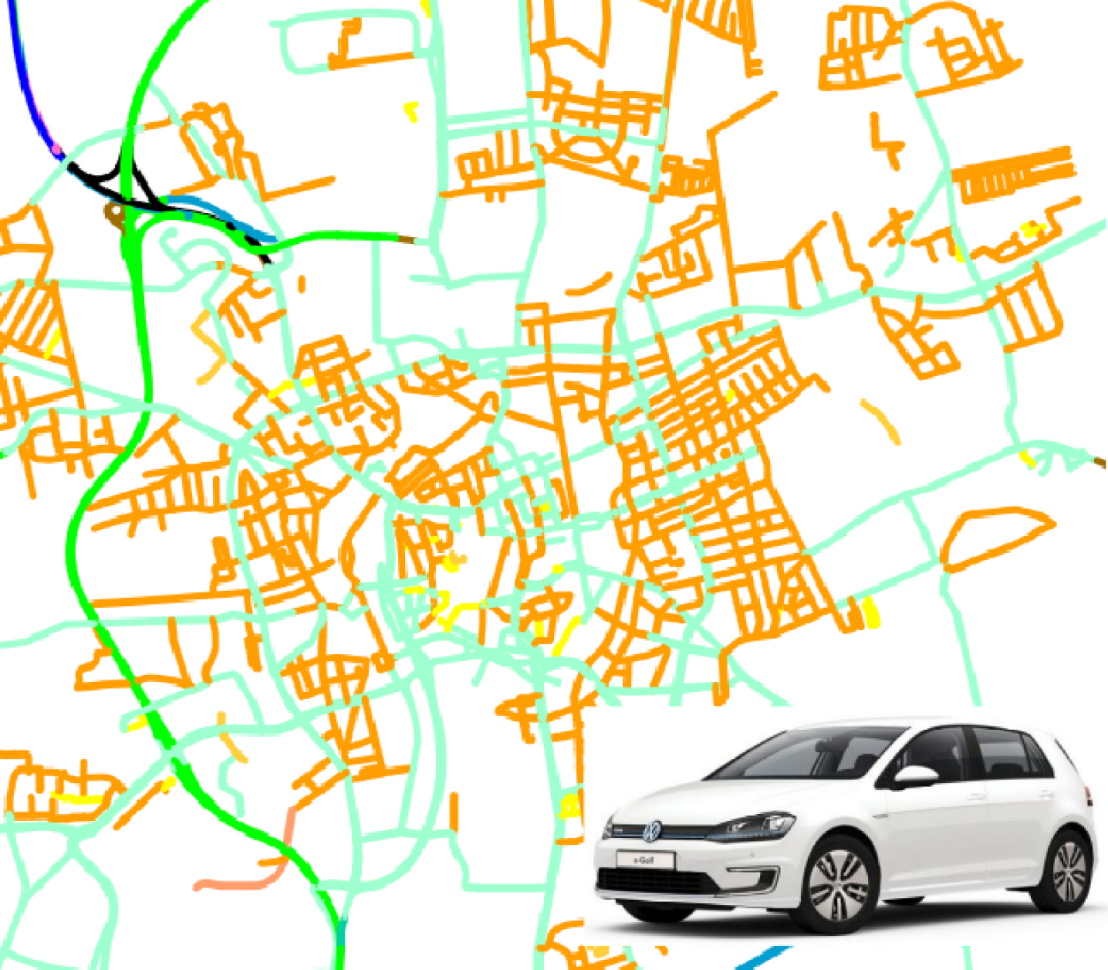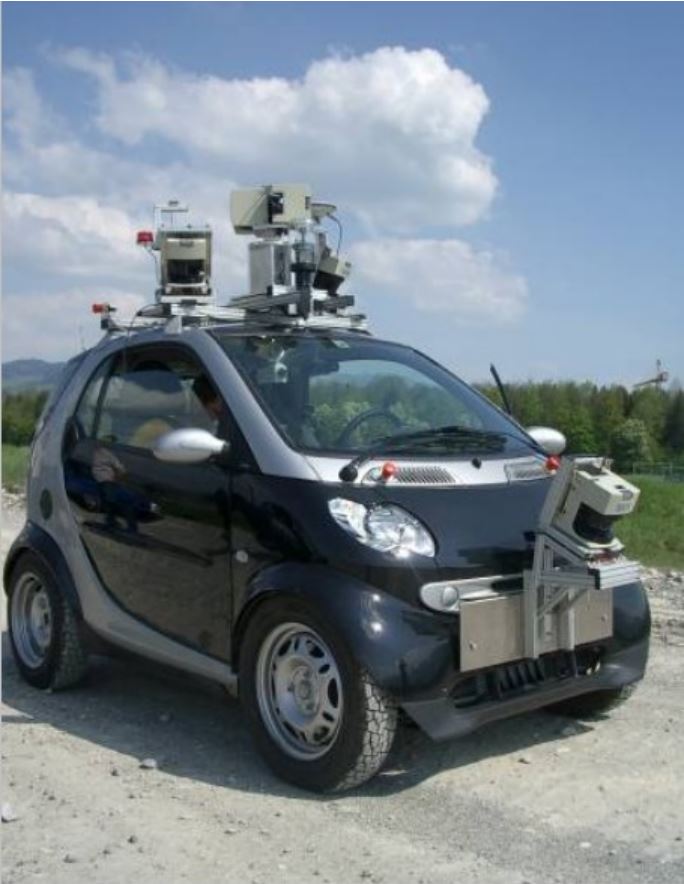Urban Robots
Running projects

external page UP-Drive - Automated Urban Parking and Driving
Automated Urban Parking and Driving
In an ongoing massive process towards urbanization, 70% of the global population is expected to be living in urban or suburban areas by 2050. Along this rapid development, the traffic infrastructure in many urban hubs has become strained despite significant public and private investment into transportation systems and the renewing and extension of road infrastructure. In many cities, severe persistent traffic congestion are a daily occurrence with associated social as well as ecological & economical challenges, the overall costs of which have been estimated in excess of €100 billion per year.
Automated transportation in combination with novel transportation concepts and associated services (both for citizens as well as for goods), is envisioned to eventually greatly alleviate many of these challenges and provide additional benefits. Consider for instance that via better coordination of vehicles traffic would become more efficient; via removal of human error, safety for all citizens, not only drivers, could be increased; via a virtual chauffeur and pick-up at the doorstep service, car-sharing will become more attractive, full individual mobility could become more affordable, mobility for the elderly or citizens with handicaps will be drastically improved, and the delivery of goods on the last mile could be effectively and innovatively approached.
While these applications presently remain visions, over the past decade substantial and impressive progress has been attained in vehicle automation with robotic trials and public funding having engendered an ecosystem from which academia and industry are embarking onto a challenging road map towards fully automated transportation. Yet, due to various technological, standardization and legal hurdles persisting, complete automation for generic on-road driving scenarios appears to remain a longer-term vision. On the path towards full automation, however, the UP-Drive consortium considers lack of mature technology in several core aspects to be the main issue presently – and this particularly holds for urban environments.
Goal
UP-Drive aims to address the outlined transport-related challenges by providing key contributions that will enable gradual automation of and collaboration among vehicles – and as a result facilitate a safer, more inclusive and more affordable transportation system.
In order to adequately address this complexity UP-Drive will focus on advancing the following technologies:
- Robust, general 360° object detection and tracking employing low-level spatio-temporal association, tracking and fusion mechanisms.
- Accurate metric localization and distributed geometrically consistent mapping in large-scale, semi-structured areas.
- Representations and mechanisms for efficient and cost-effective long-term data management across devices.
- Scene understanding, starting from detection of semantic features, classification of objects, towards behavior analysis and intent prediction.
As a result of this strategy UP-Drive expects a significant technological progress that will benefit all levels of automation: from driver assistance in the short-term to full automation in longer term – across a broad range of applications.
Completed projects
The idea of controlling machines not by manual control, but by mere "thinking" (i.e., the brain activity of human subjects) has fascinated
humankind since ever, and researchers working at the crossroads of computer science, neurosciences, and biomedical engineering have started to develop the first prototypes of brain-machine interfaces (BMI) over the last decade or so. Thus, researchers have been able to train monkeys, who had implanted tens of microelectrodes in their brain, to control a robot arm. Human subjects, on their side, have shown the possibility to drive a mobile robot between rooms in a house model using non-invasive EEG recordings.
Although these promising first results are attracting significant attention from an increasing number of research laboratories around the world, most of the issues being explored are related to "augmented communication" where fast decision-making is not critical as it is the case for real-time control of robotics devices and neuroprosthesis. The latter kind of applications is the most challenging for BMI and it is the goal of this project. In particular, we will explore mental teleoperation of a mobile robot based on non-invasive brain activity related to motor tasks (i.e., subjects imagine natural movements of their body that are translated into similar actions of the robot) and multiple modalities of feedback (visual, auditory, haptic and vestibular).
The ETH Joint Autonomous Navigation
The SPARC Project forms an European effort to improve general trafic safety be aplying intelligent X-by-wire technology to vehicles powertrains. Within this project the Autonomous Systems Lab of ETH is envolved in the development of an intelligent driver assistant system allowing the vehicle to detect environment features like lanes and other traffic participants independently from the driver and devolop strategies for a good reaction on that particular environment.
SPARC stands for Secure Propulsion using Advanced Redundant Control. The goal of SPARC is to substantially improve traffic safety and efficiency for heavy goods vehicles using intelligent x-by-wire technologies in the powertrain. To prove this standardized concept an automotive Software/Hardware platform will be developed that is scalable and usable from heavy goods vehicles down to small passenger cars (sPC) and be integrated therein. SPARC will propose a complete automotive concept of an open system architecture, where software functionalities of different partners can be integrated easily. Two validation vehicles of this architecture will be build and evaluated.
Download Project poster 1 (PDF, 2.5 MB)
Download Project poster 2 (PDF, 918 KB)
Download Project poster 3 (PDF, 689 KB)

external page Autonomous Valet Parking
The project V-Charge is based on the vision that, due to required drastic decrease of CO2 production and energy consumption, mobility will undergo important changes in the years to come. This includes new concept for an optimal combination of public and individual transportation as well as the introduction of electrical cars that need coordinated recharging. A typical scenario of such a concept might be automatic drop-off and recovery of a car in front of a train station without taking care of parking or re-charging. Such new mobility concepts require among other technologies autonomous driving in designated areas.
